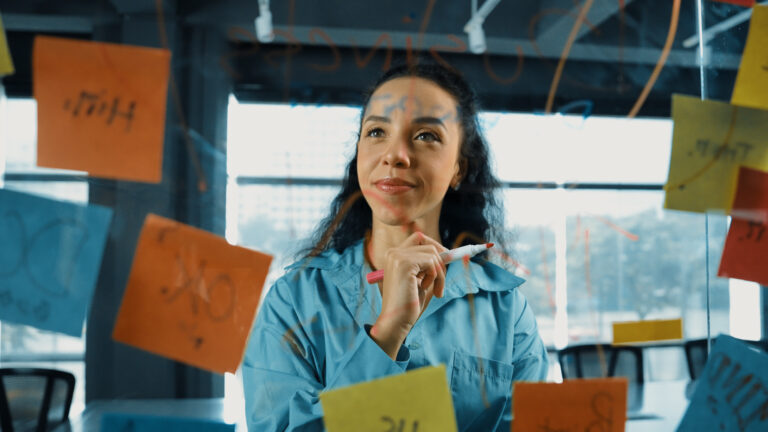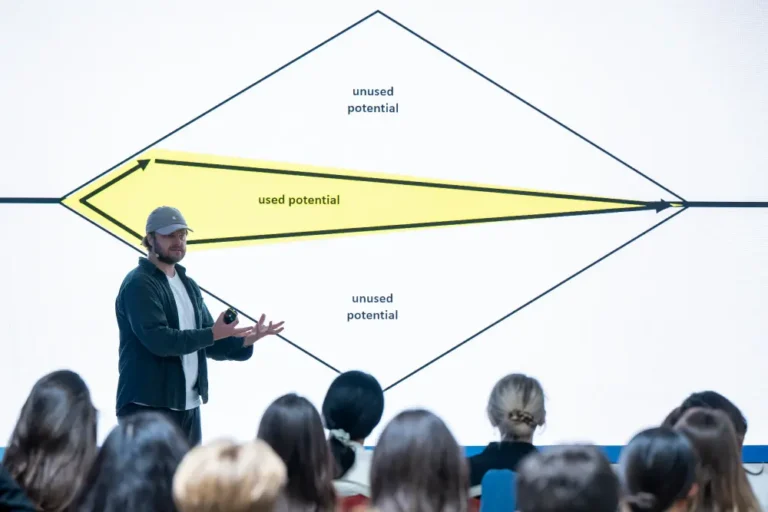Innovation is often described as the engine of progress. Companies that fail to innovate fall behind. But beyond business, many individuals also wish they could be “more innovative” – solving problems creatively, spotting opportunities earlier, or bringing bold ideas to life.
So how do you actually become more innovative? Do you have to be a creative genius to develop new solutions? Research shows: no. Innovation isn’t about innate genius. It’s the result of specific, trainable behaviors.
Innovation Starts with Behavior, Not Inspiration
A common misconception is that innovation comes from sudden flashes of insight – the famous lightbulb moment. In reality, research conducted at TU Munich and Siemens shows that innovation is rooted in concrete actions – the so-called Creative Behaviors.
These are everyday, observable actions such as:
- Asking purposeful questions
- Noticing patterns and signals
- Challenging assumptions
- Developing visions
- Structuring and communicating ideas
These behaviors can be systematically trained. The more often you practice them, the more innovative you become – regardless of your job title or industry.
The Five Creativity Types as Drivers of Innovation
To make these behaviors more tangible, researchers grouped them into five creativity types. Each type brings its own particular strength:
- Sensemaker – The Clarifier: Brings structure and makes ideas understandable.
- Cultivator – The Enabler: Creates psychological safety and fosters collaboration.
- Imaginator – The Visionary: Designs bold futures and inspires with imagery.
- Unboxer – The Challenger: Questions assumptions and breaks patterns.
- Observer – The Perceiver: Notices signals and detects patterns.
Becoming more innovative means knowing these strengths – and learning to apply them deliberately.
Example: A Team Stuck in Place
Imagine a team tasked with developing a new digital product. After weeks of intense work, there is still no breakthrough idea.
- The Sensemakers organize information, create roadmaps, and structure meetings – but without new inputs, progress stalls.
- An Observer notices: “Our users behave completely differently than we assume. Look at the data!”
- An Unboxer asks: “Why do we even have to make an app? Couldn’t it also be a physical device?”
- An Imaginator paints a picture: “Imagine that in five years, customers are using a solution that feels like a personal assistant.”
- The Cultivator ensures that all these voices are heard and that no one is afraid to suggest “crazy” ideas.
Innovation emerges not from a lone genius but from the conscious interplay of diverse creative behaviors.
Practical Strategies to Become More Innovative
The good news: you don’t need to restructure your entire team to become more innovative. Individuals can start with small routines. Here are five everyday strategies:
1. Train your eye for patterns (Observer)
Take a few minutes each day to look for patterns in your environment – purchasing habits, recurring phrases in meetings, or trends in your industry. Write down three observations per week.
2. Ask systematic questions (Unboxer)
Deliberately pose “Why” or “What if” questions. Example: “Why do we do it this way?” or “What if we tried the opposite?” Even one question can completely shift a discussion.
3. Work with images (Imaginator)
Don’t just explain ideas in words – use images or metaphors. Sketch a scenario, draw a prototype, or find a symbol. This makes ideas more tangible.
4. Structure ideas (Sensemaker)
Use simple tools like mind maps, customer journeys, or storyboards to organize ideas. Innovation doesn’t only need wild thinking, it also requires structures that make ideas actionable.
5. Create safe spaces (Cultivator)
When working with others, encourage them to share unfinished thoughts. Instead of immediately criticizing, listen first. Innovation thrives where people feel safe to take risks.
Many of these strategies can be applied individually, but they become especially powerful when practiced as a team. That’s why we offer Starter Workshops – a one-day experience where teams explore methods, exercises, and creative routines together. For those who want to go deeper, the Creativity Masterclass builds on this foundation and provides a structured learning path.
Typical Obstacles on the Path to Innovation
Becoming more innovative also means overcoming common barriers:
- Time pressure: Under stress, we fall back on familiar solutions.
Tip: Plan short creative breaks. - Fear of rejection: Many hesitate to share unconventional ideas.
Tip: Run “wild ideas” sessions where evaluation is off-limits. - Perfectionism: The urge to find the perfect solution right away can paralyze creativity.
Tip: Think in prototypes, not final products.
A study by Daker et al. (2019) shows that Creative Anxiety – the fear of creative tasks – can significantly hinder performance. The good news: this anxiety is trainable. The more often people engage in creative exercises within safe environments, the less intimidating creativity becomes.
Small Everyday Exercises
Here are a few mini-exercises you can try immediately:
- Idea Combination: Take two random objects from your surroundings (e.g., “coffee machine” + “fitness app”) and imagine what could emerge from them.
- Reverse Thinking: Intentionally flip the problem. If your task is “How can we gain more customers?”, ask: “How would we lose customers?” The answers often reveal surprising insights.
- Creative Journal: Write down one observation or idea every evening. After a month, you’ll have a collection that reveals trends and sparks new concepts.
Conclusion: Becoming More Innovative Takes Practice
Innovation is not a coincidence. It doesn’t happen through a magical moment of inspiration, but through repeated, practiced behaviors. Research shows that the more consciously we train Creative Behaviors, the more likely we are to generate fresh ideas.
Becoming more innovative doesn’t mean waiting for inspiration. It means building the right routines into daily life: observing, questioning, visualizing, structuring, and creating spaces for experimentation.
This is how a culture emerges in which innovation becomes second nature – in companies as well as in personal life. genauso wie im persönlichen Leben.

